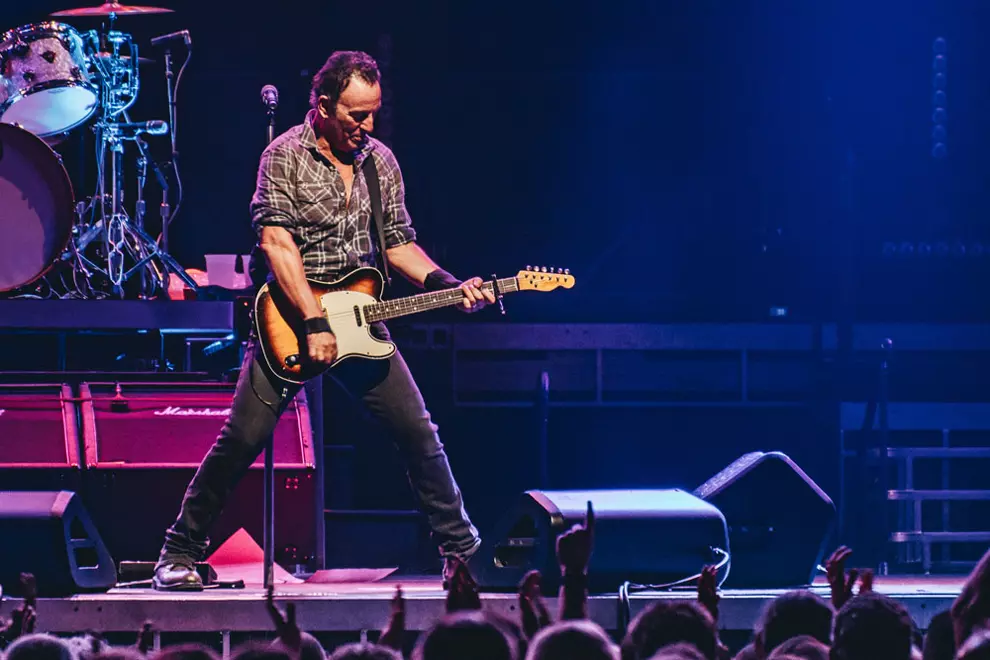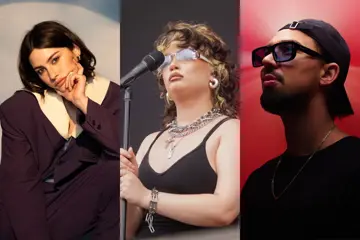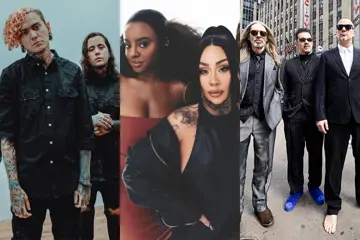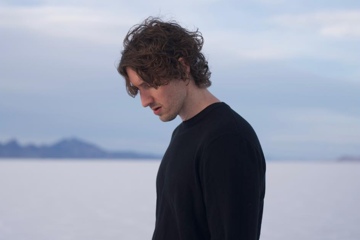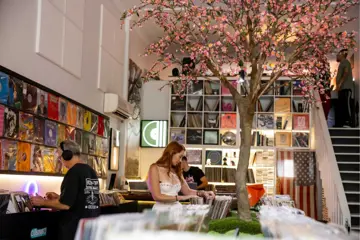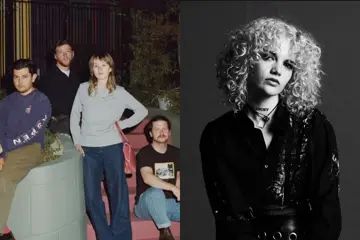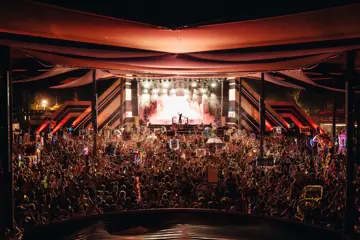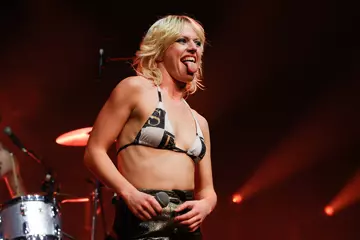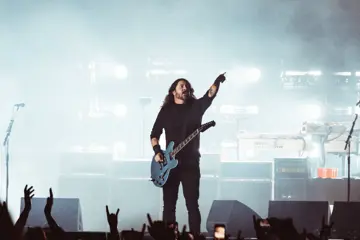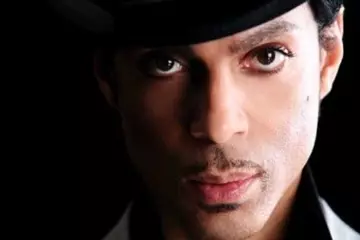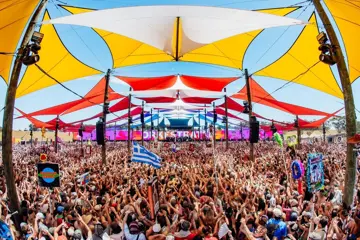 Fred Again..
Fred Again..Australian superfans, estimated to make up 28 per cent of a live event, are happy to pay up to 50 per cent more at concerts and festivals for a VIP upgrade.
Only 8 per cent see ticket price as a factor in deciding whether to attend, unlike 17 per cent of casual fans.
According to the self-service ticketing platform Eventbrite, superfan festival priorities are a VIP viewing area (44 per cent), faster private check-in (36 per cent), the chance to hang backstage with artists (33 per cent), VIP bathrooms, and free drinks (both 31 per cent).
But coming is a real acid test of just how much they’ll let their wallets open.
Live Nation’s US-based President and CEO, Michael Rapino, revealed that the company is expanding its ‘dynamic pricing’ offering to Australia and South America.
‘Dynamic pricing’ applies to seats closest to the stage. The price totally depends in real time on how many fans want them for an event and how much they’ll pay. The decision is usually made with the act.
Taylor Swift, Drake, Paul McCartney, The Weeknd and Alicia Keys used it in the United States. It’s not always popular. The Cure’s Robert Smith called it “a grubby scam” and demanded his fans be reimbursed.
Don't miss a beat with our FREE daily newsletter
The biggest backlash was when Bruce Springsteen tickets went for $5,000. Some fans were bitter, crying when they saw online how expensive the seats were and feeling betrayed by their hero, who sang working-class anthems and donated to food banks.
But these expensive tickets were only bought by superfans who make up 11 per cent of his audience. Most of Bruce’s tickets cost around $200, and 88.2 per cent sold for set prices. Live Nation’s take is 5 per cent to 7 per cent of the face value of the ticket while top artists can get 90 per cent.
Rapino expects ‘dynamic pricing’ to become the norm, explaining, “Concerts are a really special moment in their life, and they will pay for it.” He’s talking to American politicians about making ‘dynamic pricing’ accepted into law.
There’s no reason to think other promoters won’t adopt the pricing, given that Live Nation is the world’s biggest tour promoter. In late February, it revealed that in 2023, it drew $145 million to 50,000 events and generated a 36 per cent rise in revenue to a record US$22.7 billion.
For comparison, the state of Tasmania had a Gross Regional Product of $36.9 billion in 2021/22.
Live Nation also plans to spend $150 million on four of its venues, adding more VIP offerings from premiere parking to rock boxes, decks and viewing areas to VIP clubs and new design bars.
Part Of Landscape
Smart Australian festivals learned early on to cater to superfans. They don’t stop at VIP services. They allow them to design a festival bill, which makes sense as 44 per cent of superfans come for the acts and 36 per cent for the headliners.
Wiser promoters do well to take in their feedback. One survey had 46 per cent thinking festivals are becoming too corporate. 11 per cent go because of the location, 10 per cent for uniqueness of experience, and 7 per cent to discover new artists.
Based on Eventbrite’s UK profile, a live music superfan is most likely male (59 per cent), in their 30s, and attend a wide range of live entertainment. 37 per cent will travel over two hours, 44 per cent use Instagram at festivals, and 58 per cent engage with drink brand sponsors.
This year in Australia, Taylor Swift, P!nk and Fred again.. moved the boundaries on just how fans can be obsessed and how much superfans will spend.
On the weekend, Melbourne Lord Mayor Sally Capp announced that Swift’s shows brought an extra $86 million into the city. Destination NSW estimated 100,000 fans came for the Sydney shows and spent $80 million. Business Sydney expected an extra boost of $133 million.
Swifties spent an estimated $66 million on merchandise alone during her Sydney ‘Eras’ dates, of which the star’s cut was $22.3 million.
There were scenes of queues of 1,000 each for seven merch stands, with wait times of up to two hours. The average spend was $1,300 each.
35 per cent of the crowd was from around Australia or abroad. Some spent $10,000 attending every show because “that’s what Swifties do”.
Swifties in Southeast Asia applied for tickets in Australia, Singapore and Japan. One from the Philippines took a four-hour boat ride from his home in Masbate Island to the Luzon mainland, then 12 hours by bus to Manila, and a four-hour flight to Singapore. He blew a few months’ wages on this.
None of P!nk’s Australian fans threw up a pouch of their mum’s ashes onstage as happened last year in Canada. “That was a first!” she gasped, after gently returning the gift. But there were presents of teddies, flowers and artwork; many dyed their hair pink.
The Adelaide Economic Development Agency reported that the 56,000 followers at Adelaide Oval also spent $7 million in the city (five times the spend on a Tuesday night), hotels were 90 per cent full, and the Australian Hotels Association SA estimated food and drinks businesses around the venue saw trade blow up 60 to 70 per cent.
In Newcastle, where she added $9 million to the economy, the city welcomed fans with pink-coloured cocktails and food, pink lighting in clubs, and a disco in open-air Wheeler Place with a pink dance floor.
British DJ/producer Fred again..’s phenomenal tour also confirmed the lengths superfans will go to. One million queued online for the arena dates, and those who missed out paid up to $2,000 a pop. One offered to sell her kidneys for his Opera House show, some were prepared to give up vegetarianism after rumours he was playing a Hungry Jacks outlet.
In a bid to entice him to extend his tour to Perth, a nature and wildlife photographer synced his video of a wild electrical storm in the Pilbara, Western Australia, with Fred’s beats and posted it on Instagram.
On the weekend, 31,500 descended on The Spit on the Gold Coast, creating a traffic snarl-up with bus services caught unaware. Hours after his 9 am set at Revolver Upstairs in Melbourne, he announced a sequel at The Timberyard in Port Melbourne, to more hectic scenes. A pop-up in Brunswick Heads in Northern NSW announced at 10 am on Friday (March 8) for 6.30 pm hit capacity 40 minutes later.
Music Venues Catering For Superfans
Overseas stadiums and clubs are changing their designs to cater for what Gen Z wants and also fit in to superfan requirements.
These include more chill-out spaces to recharge and hang out. These will have greater food and beverage offerings, which will remain open after the event so they can collectively “recreate” it.
With superfans’ need to feel special and not just be a face in the crowd, seating formations will also have greater options than solely pointing to the stage. Merchandising areas will be larger.
Expect venues to have more immersive digital technology like augmented reality (AR) and artificial intelligence (AI) to help fans and act connect more deeply and personalise the concert experience more.
A1 fine-tunes the sound for the best effect, even to the “worst seat” in the house, and transfers spectacular lighting and video to truly be off the dome.
This month, US festival Coachella announced a new partnership with NFT marketplace OpenSea to have 1,000 NFTS that would allow fans to access “some of the festival's most exclusive experiences and products” including VIP lounges and merchandising.
Its NFTs were personalized with the fan’s photo, increasing their value as a keepsake and also allowing them to get messages, preview videos and Q&As.
Men Versus Women
For promoters with a greater interest in fans as a whole, research firm Luminate confirms that, in America, there is a divide between the sexes.
Men are more likely to have attended a club, concert or festival in the past 12 months at an average of 2.8 events. Women did 2.6, with greater reluctance to go because of further costs like booking fees and travel, and safety concerns. Luminate reported, “18 per cent would not attend if the event ends too late at night.”
However, women are of greater financial value to promoters and artists. The report said: “Female listeners spend +5 per cent more money monthly on live music events than the average music listener. Male listeners spend -7 per cent less than the monthly average.
“This suggests that when women engage in live music events, it is an act of committed fandom to the artist or event they are supporting as they overlook their usual concerns regarding the cost of attendance.”
Luminate summed up that artists and promoters who actively work at lifting the barriers that impact women are more likely to make more out of fans.
The Heavy Metal Experience
“Heavy metal audiences are the most loyal; they are probably the most passionate fan base – as long as you provide them with strong, good value tours which are packaged well.
“They’re kind, they’re courteous and they’re well-mannered. They look after each other. If they fall over in the mostpit, they pick each other up. They buy their tickets early, they’ll spend thousands and thousands of dollars flying to different cities for the one tour. They’re there at the show for the music and not for any other reason.”
So says Chris O’Brien, General Manager of Australian tour and festival promoter Destroy All Lines. Its harder festival offerings include March’s Knotfest with TEG Live and Finely Tuned, and which instantly sold 100,000 tix last year, Bloom with Ash Hull, and Good Things.
Two regular rites about headbangers are marriage proposals and fresh tatts. O’Brien explains: “Proposing to your partner is a pretty life-defining moment, and to do that at a music festival or concert is something we don’t take lightly. The artists absolutely love it.
“With tattoos, many are certain song lines, more about what the song means to them, not just an artist’s name or an image.”
A Spotify study of genres found metal fans the most loyal. They live and dress the metal lifestyle, are most open to new experiences, need to be different, are hostile to authority and are least likely to be religious.
It only takes 28 seconds to really damage their hearing at a show. But metal fans are a happy mob. An episode of the AC/DC Beyond The Thunder podcast explained it was because the music releases pleasure hormones in the brain.
Distinguished US scientist Dr. Mark Jude Tramos said AC/DC music improves athletic performance by enhancing heart rate, blood pressure and muscle activity.
His study found that doctors who listen to AC/DC make fewer mistakes during surgery. “The music helps to keep the surgeons' minds focused and alert, therefore boosting surgical precision. The band's music has also helped to reduce anxiety and pain in cancer patients, improving the effectiveness of cancer treatments.”
More Latest Moves For Superfans
After a win against Apple in Europe, Spotify can now move to set up “superfan clubs” where they could buy more items directly from artists.
In late February, Warner Music Group CEO Robert Kyncl revealed that Warner is building a new platform. “I firmly believe in the power of a superfan. It hasn’t really been figured out. So something we’re working on at Warner are these direct-to-superfan experiences.
“I’ve assembled a team of incredible technology talent who are working on an app where artists can connect directly with their superfans, who are generally the people that consume the most and spend the most… and we’re focused on making sure that artists get data on these superfans,” he informed the Web Summit conference in Doha, Qatar.
Universal Music Group, which has been talking about superfans for months, was part of a consortium that took a stake in the youth-orientated media platform Complex to “create a new destination for ‘superfan’ culture that will define the future of commerce, digital media, and music.”
Music Business Worldwide suggested the idea is to use Complex’s owner, live-video shopping platform NTWRK’s technology to sell “sneakers, streetwear, collectibles, vinyl and experiences direct to Complex’s culture-savvy audience.”
Eminem, who coined the term “Stan” in his 2000 song about the superfan culture, is co-producing a documentary on the phenomenon via his Shady Films. Set to be viewed through his own eyes, it is due this year.
Is The Music Business Doing It Wrong?
Jacquelle Horton, CEO of superfan community platform Fave warns that companies that expect their artists to directly keep connecting with superfans are wrong. She says it would risk artist burnout and/or dividing their attention in too many places.
Data from Fave’s inaugural Fandom Playback report showed that 89 per cent of superfans do more than just listen to the music.
They “are throwing events, creating their own merch, rallying fans to reach streaming goals, calling radio stations, curating the perfect symbolic outfit to attend concerts, getting tattoos, and so much more to embody and immerse themselves in the inspiration from the artist.”
They can rack up to 14.4 visits a day per fan to share activities. Over 75,000 fan activities were submitted by Harry Styles fans within their first month on Fave.
Interestingly: 20.09 per cent of superfans follow more than just one act. Fave says there are 1,700 fan communities on the list waiting to join it.

